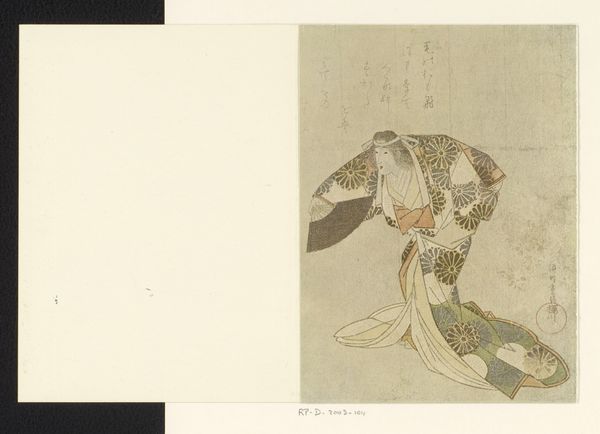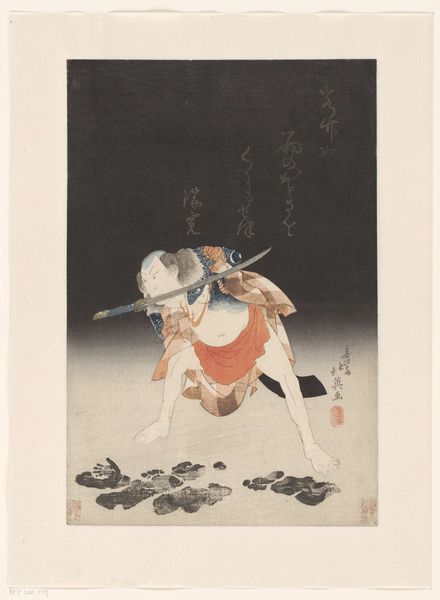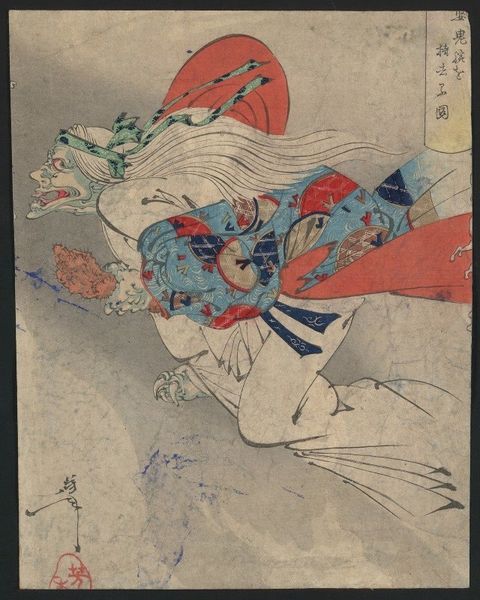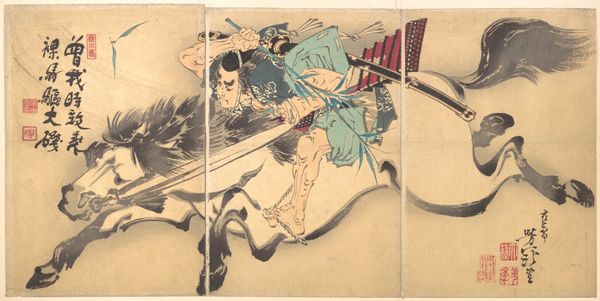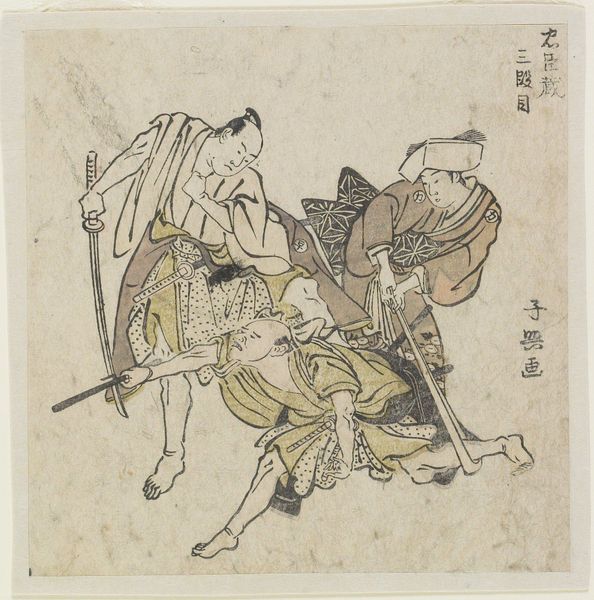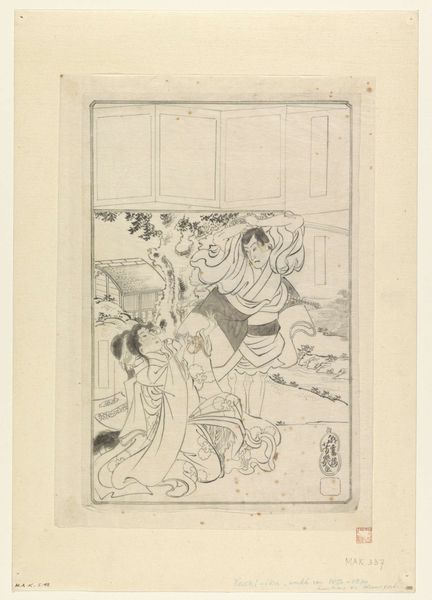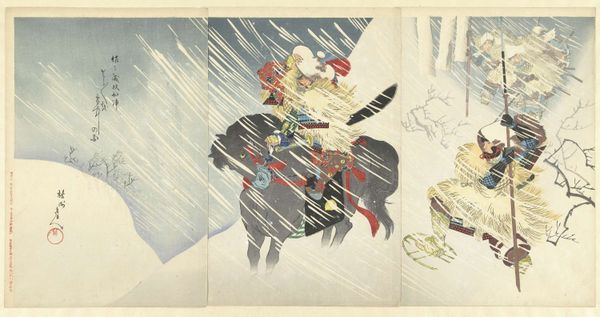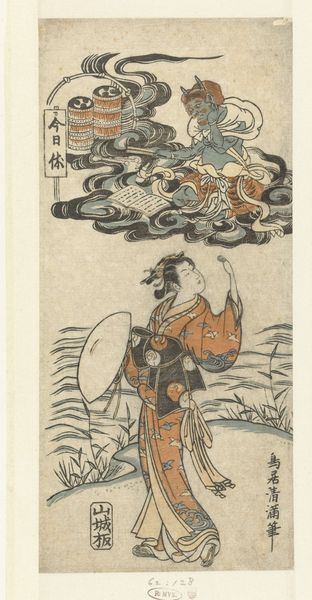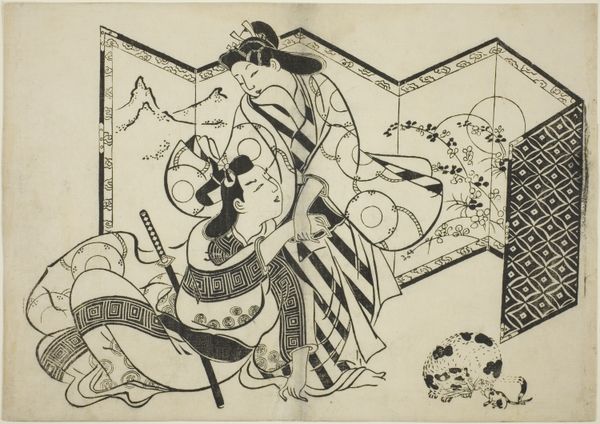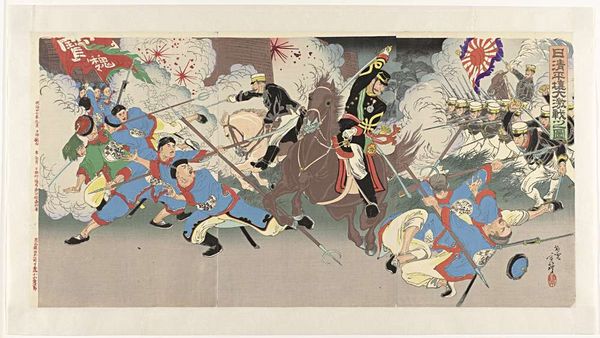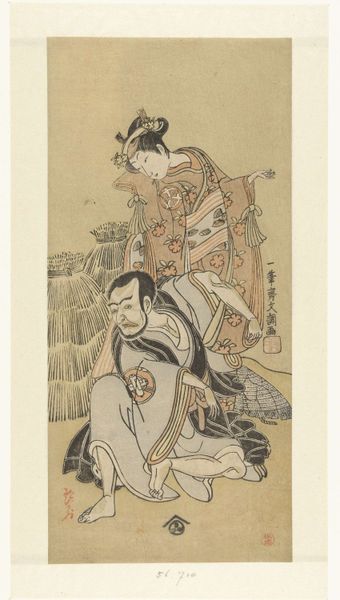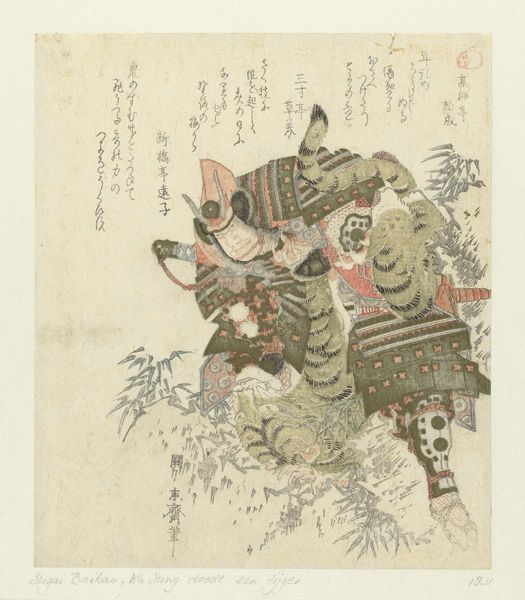
print, woodblock-print
#
narrative-art
# print
#
asian-art
#
ukiyo-e
#
figuration
#
woodblock-print
Dimensions: height 222 mm, width 161 mm
Copyright: Rijks Museum: Open Domain
Curator: I'm immediately struck by the dynamism. Despite the limited palette, there's such a sense of movement—the horse leaping, the fabrics billowing, even the rider's stance feels precarious, teetering on the brink of something. Editor: That's a fantastic observation. We’re looking at "The Great Horse Circus from Osaka," a woodblock print made by Torii Kiyonaga sometime between 1785 and 1790. It's part of the Rijksmuseum collection, offering us a glimpse into Edo period visual culture. The use of “circus” is particularly interesting when thinking about class and leisure during this period, particularly who was in the audience viewing it and in what context. Curator: Right. And I’m drawn to the white fabric, like a theatrical veil or shroud, cascading above them. It’s an incredibly potent visual metaphor, reminiscent of ritual garments or perhaps a flag marking class status. What narratives were being constructed around performances and the representation of figures of status? Editor: You've zeroed in on key symbolic elements. The horse itself, so richly patterned, speaks volumes. The figure seems almost like a wild deity, yet tamed, ridden, performing— a juxtaposition highlighting complex relations between power, performance, and the exotic allure of spectacle. Curator: It’s almost dreamlike in its arrangement. There's a controlled energy here— the artist really playing with expectations about the performance space, making use of its components to represent larger themes of gender, social hierarchies, and control. Editor: Consider how such prints circulated. Meant for a mass audience, this image would have participated in shaping and reflecting cultural attitudes about class and spectacle at that moment. It’s an assertion and consolidation of certain values, disseminated widely. Curator: Precisely, these kinds of scenes really allow us to dive into gender representation at the time— it also asks us to question who got to experience entertainment and public gathering like this. What limitations did marginalized communities face when attempting to enjoy common spaces? Editor: Yes, the print holds space to discuss the tension between spectacle and social participation in that historical moment. The circus transforms into this stage where those power dynamics perform alongside the equestrian show. It encourages to rethink and redefine the traditional ukiyo-e narrative framework. Curator: Indeed, examining the artwork through an intersectional lens really unveils these fascinating cultural intricacies—the role of performance, representation, and access. Editor: It has certainly offered some new layers to an older image; new points that enrich our engagement with "The Great Horse Circus".
Comments
No comments
Be the first to comment and join the conversation on the ultimate creative platform.
